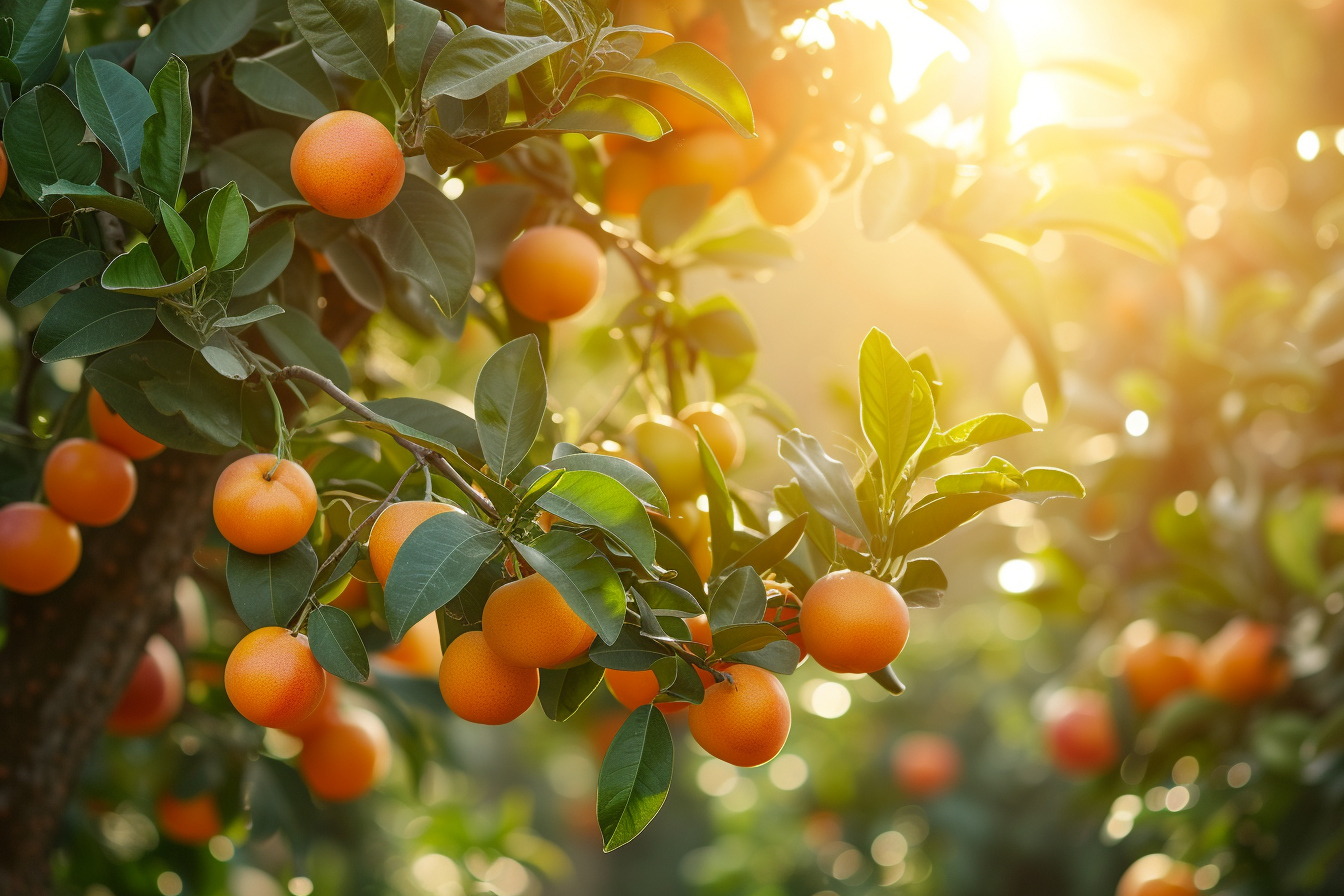Caring for fruit trees is as much an art as it is a science. Achieving optimal growth and a bountiful harvest requires attention to detail, patience, and a comprehensive understanding of the needs of your trees. Fruit trees are a long-term investment, and with the right care, they can provide delicious produce as well as beauty and shade for your landscape. Below are top-tier strategies to ensure the health and productivity of your fruit trees.
Site selection and planting
Choose the Right Location
Setting the stage for success begins with site selection. Prioritize a spot with excellent drainage to prevent water from pooling around the roots, which can lead to rot. Fruit trees also flourish in areas that receive full sunlight for at least 6-8 hours a day.
Plant with Care
When planting, the hole must be twice as wide as the root ball and just as deep. This encourages roots to spread out, anchoring the tree and facilitating nutrient uptake. Ensure that the graft union – the knot where the fruiting variety meets the rootstock – remains above soil level to prevent rot and disease invasion.
Soil health and nutrition
Feed Your Trees Well
Healthy soil is the foundation of a productive fruit tree. Regularly adding organic matter like compost improves soil structure and fertility. Testing soil annually enables you to amend it appropriately with necessary nutrients. Balanced fertilization helps maintain tree vigor without promoting excessive vegetative growth that can reduce fruit quality or increase disease susceptibility.
Understand Nutrient Requirements
Specific nutrient requirements vary according to the tree type, but nitrogen, potassium, and phosphorus are generally significant for fruit trees. However, too much nitrogen can lead to lush foliage at the expense of fruit production.
Watering wisely
Water Deeply but Infrequently
A common mistake is frequent, shallow watering, which leads to superficial root systems. Instead, water deeply to encourage roots to grow downward, making trees more resilient and better able to access nutrients. Young trees need more frequent watering as their root systems are not yet established, whereas mature trees require less frequent but deeper watering.
Monitor Moisture Levels
Consistent moisture is crucial, especially during fruit set and growth. However, overwatering can be just as detrimental as drought. Utilizing mulch helps retain soil moisture while preventing drastic fluctuations in soil temperature.
Pruning for health and productivity
Prune for Structure and Sunlight
Pruning plays a pivotal role in tree care, affecting not only the health of your trees but also the quality and quantity of the fruit produced. Removing dead or diseased branches and thinning the canopy allow sunlight to penetrate and air to circulate more effectively throughout the tree, reducing disease pressure and promoting even ripening of fruit.
Time Pruning Correctly
Ideal pruning times vary among tree species and local climates, but generally, late winter to early spring is a safe bet. Pruning during dormancy prevents excessive sap loss and allows for robust wound healing in the upcoming growing season.
Pest and disease management

Be Proactive
Staying proactive is key in managing pests and diseases. Regular inspections can catch issues early before they become significant problems. Implementing integrated pest management practices, such as encouraging beneficial insects and practicing proper sanitation by cleaning up fallen fruit and debris, can prevent many common issues.
Natural Disease Resistance
Select varieties with natural disease resistance. This proactive approach can save much time and effort that would otherwise go into disease control.
Seasonal care and maintenance
Spring Vigilance
Spring is a critical time for fruit trees. Bud break and early foliage growth make trees susceptible to pests and diseases. Timely sprays with dormant oil can smother overwintering pests, and fungicides can minimize the risk of fungal diseases like powdery mildew or apple scab.
Summer Focus on Growth and Developmen
During summer, focus on maintaining consistent moisture, monitoring for pests, and thinning fruit if necessary to prevent branches from breaking under weight and to ensure remaining fruits develop to their full potential.
Autumn Preparation for Dormancy
In autumn, trees are preparing for dormancy. This marks a good time to apply a layer of mulch to insulate roots against freezing temperatures and slowly release nutrients as it decomposes.
Emphasizing organic practices
Opt for organic approaches
Whenever possible, choose organic practices in caring for fruit trees. Using natural fertilizers, compost, and biological pest controls reduces chemical inputs, promoting a safer environment for both the trees and the consumers of their fruit.
Support Natural Defenses
Enhancing a tree’s natural defenses through proper care and balanced nutrition reduces the need for chemical interventions. A healthy tree is the best defense against disease and pest infestation.
Harvesting and ongoing assessment
Know When to Harvest
Understanding the right time to harvest can make a significant difference in fruit quality. This varies not just from species to species but also from variety to variety. Research the indicators of ripeness for your particular trees to reap the fruits of your labor at peak flavor and texture.
Keep Learning and Adjusting
Finally, nurturing fruit trees is an ongoing learning process. Each season brings its lessons and challenges, necessitating a flexible approach to tree care. Constant observation, learning, and adjustment are vital to keeping your trees in top shape.
By following these comprehensive care tips and continually seeking to understand the specific needs of your fruit trees, you’ll be well on your way to enjoying the fruits of your labor – quite literally – with bountiful harvests for many seasons to come. Remember, nothing beats the taste of fruit freshly picked from your own trees, and the satisfaction that comes with nurturing them to productive maturity is incomparable.